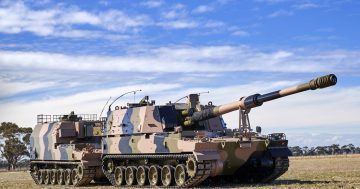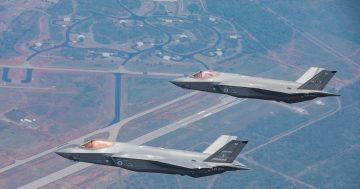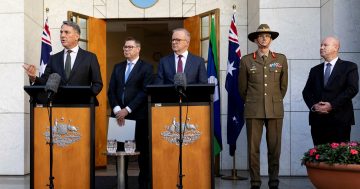
An RAAF C-27J Spartan tactical airlifter in a recent exercise. Photo: ADF.
A report by the partially government-funded Australian Strategic Policy Institute (ASPI) has highlighted a widening disconnect between the urgent need to equip the Australian Defence Force (ADF) with advanced capabilities to deter China, and the funding allocated to do so.
The 57-page report titled The big squeeze. ASPI Defence budget brief 2023–2024, was published on 30 May and authored by analysts Jennifer Parker, David Uren, Rebecca Shrimpton and Rob Bourke.
Using Ukraine as an example, its states: “It’s easy to take security for granted when it’s there, and only realise its true value when it isn’t… Ideally, defence organisations and defence forces are designed and function as an insurance policy.”
The 2023 Defence Strategic Review (DSR) released in April was designed to address some of the perceived shortcomings in the ADF in the face of increased competition and tensions in the Indo-Pacific region, particularly from an emboldened and more belligerent China.
Apart from Beijing’s growing assertiveness towards Taiwan and India and its growing global economic coercion, it also highlighted other global tensions. These included the war in Ukraine, the increasing vulnerability of Australia’s Pacific island neighbours to climate change, an emboldened nuclear North Korea, and continuing instability in the Middle East.
The DSR echoed the 2020 Defence Security Update (DSU), as well as expert commentary in recent years which stated the previous 10-year warning time Australia could have expected for a potential conflict in the region had been reduced to less than half that. ASPI said the previous warning time assumption had been used by successive governments to push back decisions on the acquisition of capabilities because there would have been time to respond to any threats.
This is no longer the case and, as the DSR points out, Australia needs to urgently re-design elements of the ADF to meet a potential threat well inside 10 years.
ASPI’s report highlights moves by Japan and South Korea to initiate “dramatic changes” to their national defence policies through “important capability and budget decisions”. It states, like our north-Asian partners, “Australia is facing real and present threats to the relative peace and stability that has underpinned our prosperity and security as a nation for several decades”.
The report states the “increasingly challenging geopolitical environment has forced big shifts in ADF planning, including new capabilities required, changes in the ADF structure, a bigger defence force overall and a demand for increased readiness”. It also highlights recommendations from previous defence reviews to uncouple defence spending from a fixed benchmark such as a share of GDP, and to instead focus on spending to match Australia’s “strategic need”.
But the report suggests the government has missed an opportunity, stating: “this year’s Budget requires the department to commence a transformative shift in its capabilities, responding to new geopolitical realities, unsupported by any additional funds for the next four years.”
The May 2023 Defence Budget has basically adhered to the funding profile as laid out in the 2016 Integrated Investment Plan which will see funding over the forward estimates rise by 14 per cent, 5.3 per cent ahead of inflation. Despite a near-doubling of inflation since the previous government’s March 2022 budget, the yearly dollar amounts are virtually identical. Therefore, the defence budget has less money than that allocated a year ago.
“At a time when defence is being asked to take on unprecedented challenges with the nuclear-powered submarine program and the far-reaching recommendations of the DSR, the department has been given less core funding,” the ASPI report reads.
“The only increase in Defence funding since the final budget of the former government in March 2022 is $4 billion in compensation for the fall in the value of the Australian dollar, which has pushed up the cost of its imported equipment. Excluding that, this year’s Budget provides $1.5 billion less to Defence over the next three years than the budget last March.”
Despite the apparent urgency of the geo-political situation Australia finds itself in, additional reviews resulting from the DSR and the need to make elements of the ADF more efficient mean real change won’t be made until the 2024 budget.
“This year’s Budget is essentially a holding operation while Defence works out how to accomplish the changes to the force structure recommended by the DSR. That includes making and implementing the tough decisions on what can be cancelled, downsized, rescheduled or otherwise shifted off the books for the next four years while working out the timing and size of the new commitments.”
As one of the report’s authors Rebecca Shrimpton remarked on LinkedIn on 30 May: “The key takeaway is that despite increasingly complex strategic circumstances, Defence is in effect having to achieve more with less.”





















